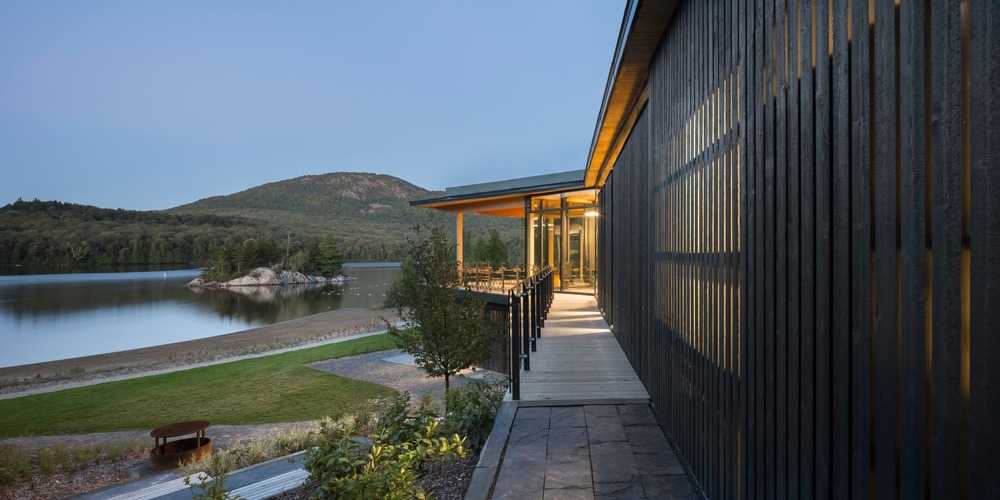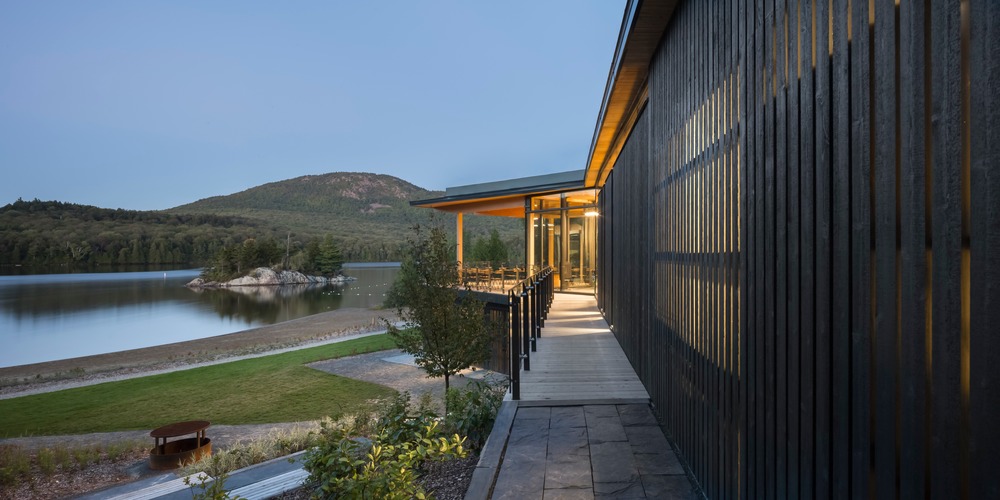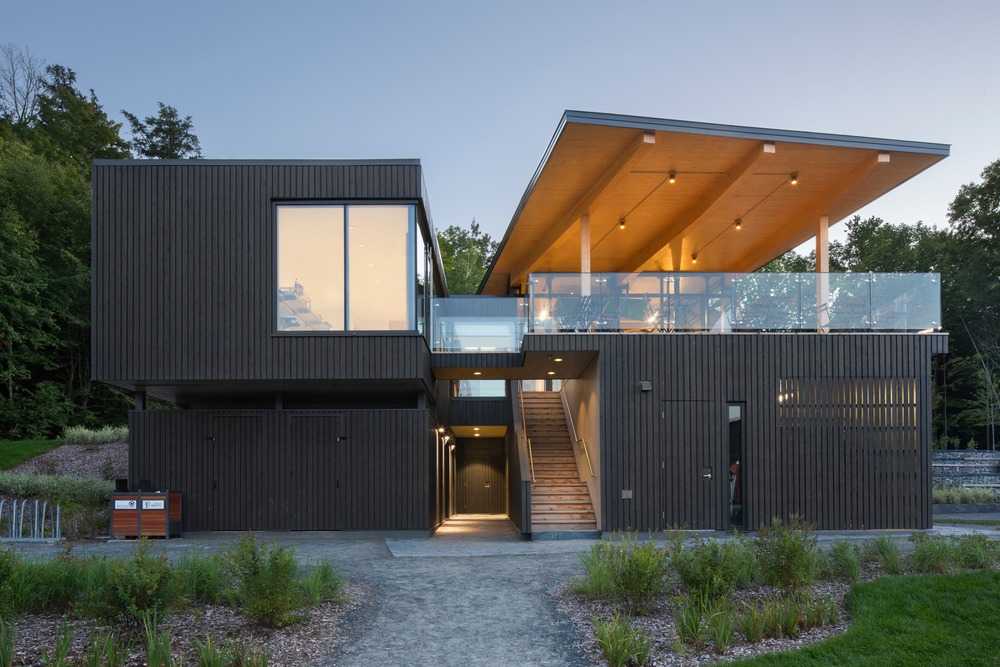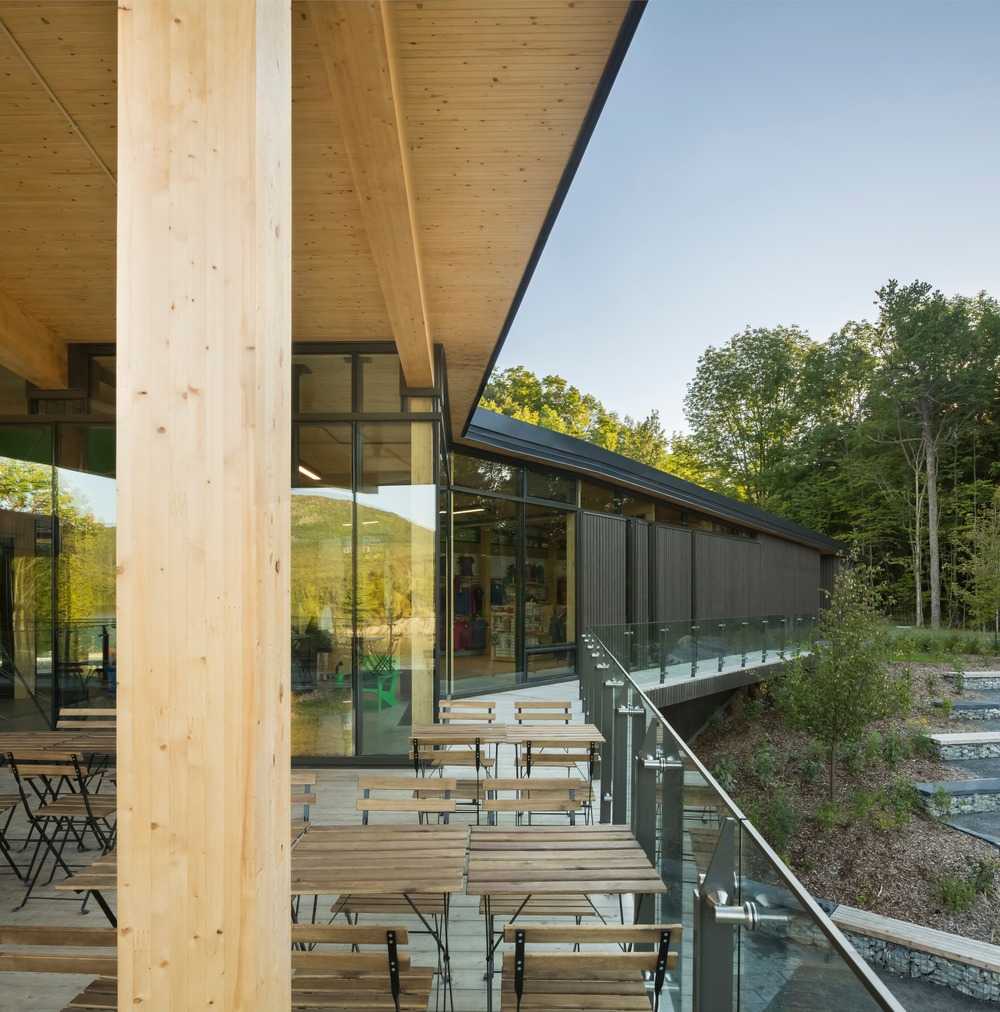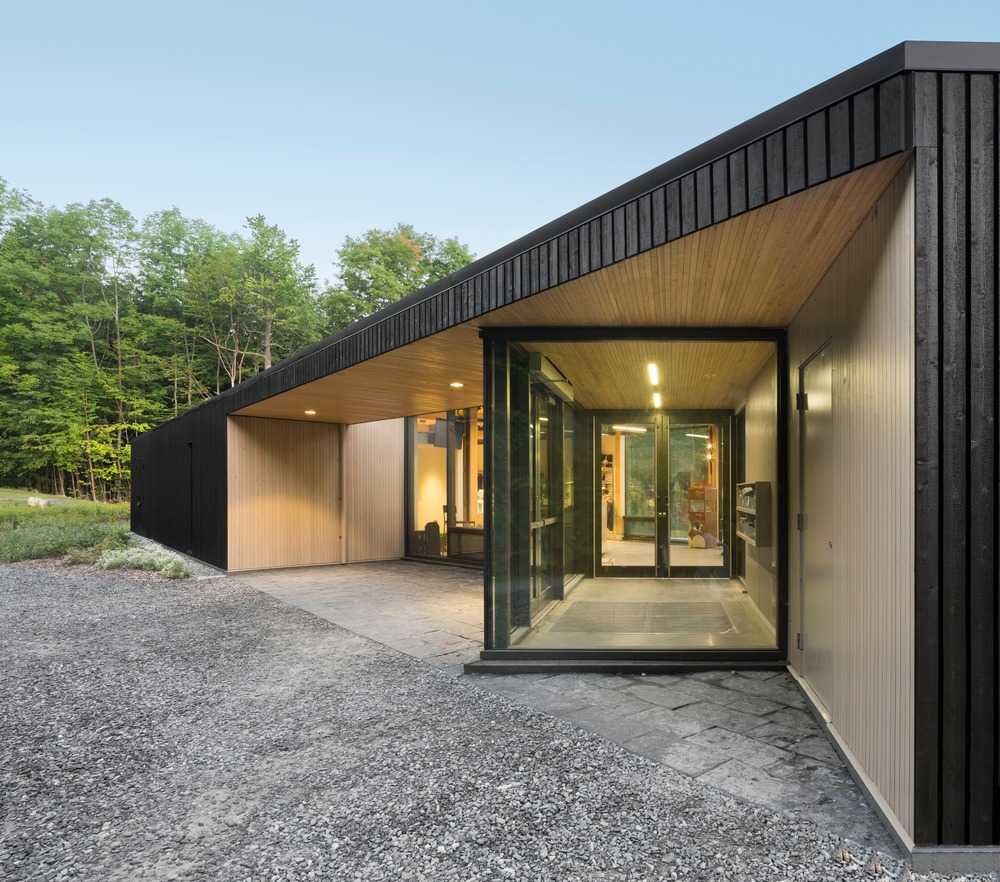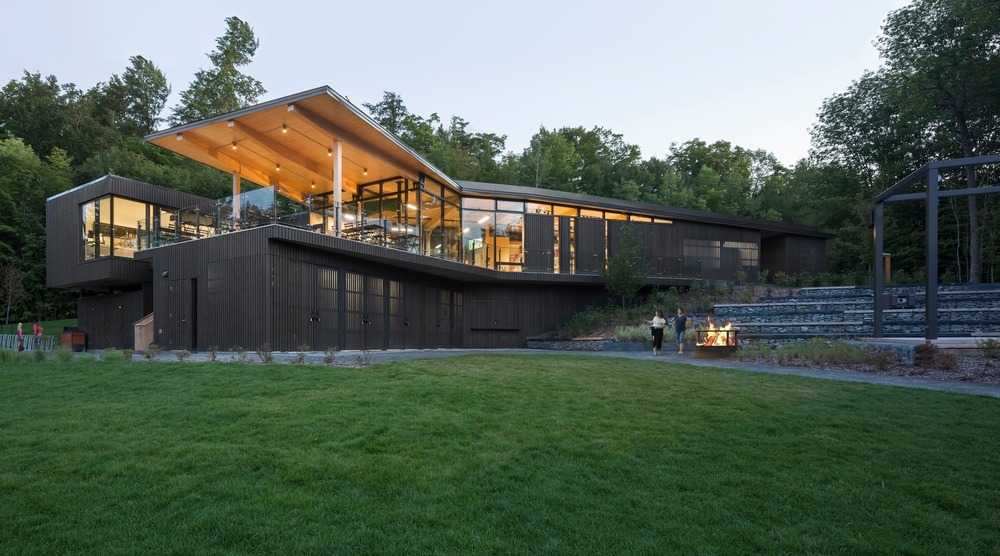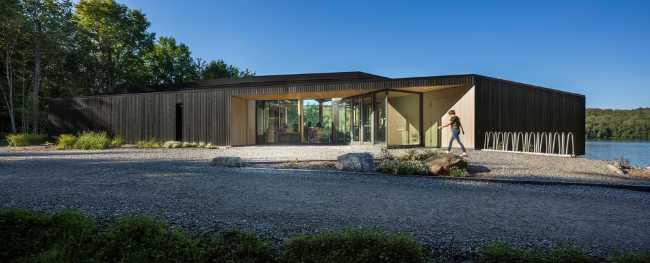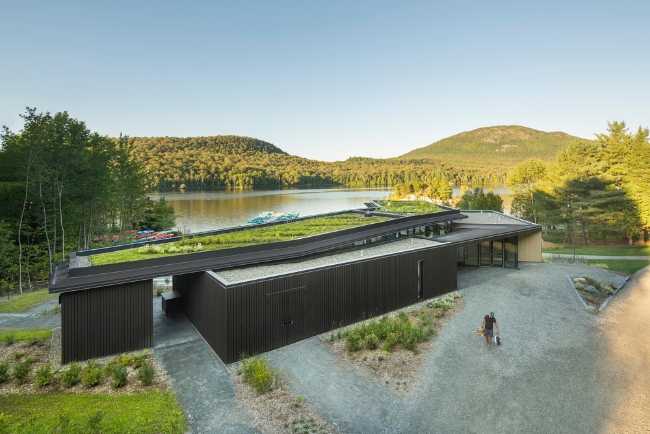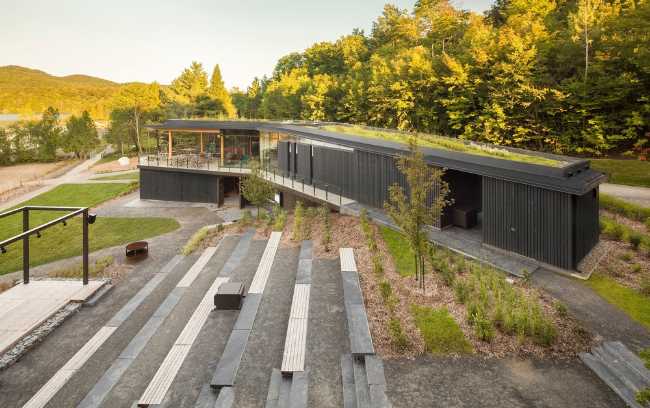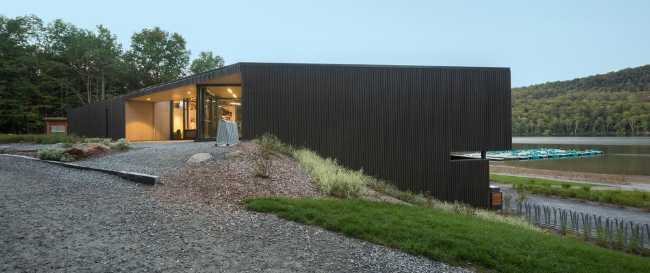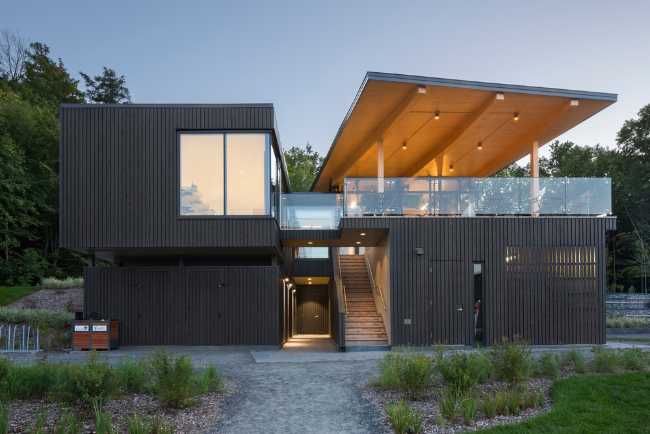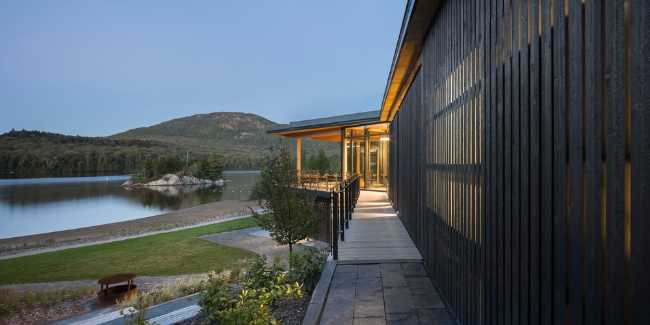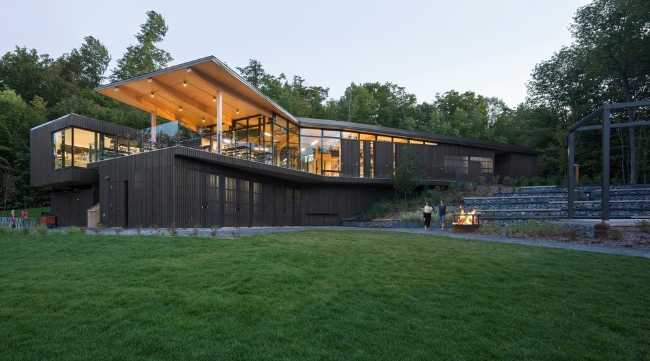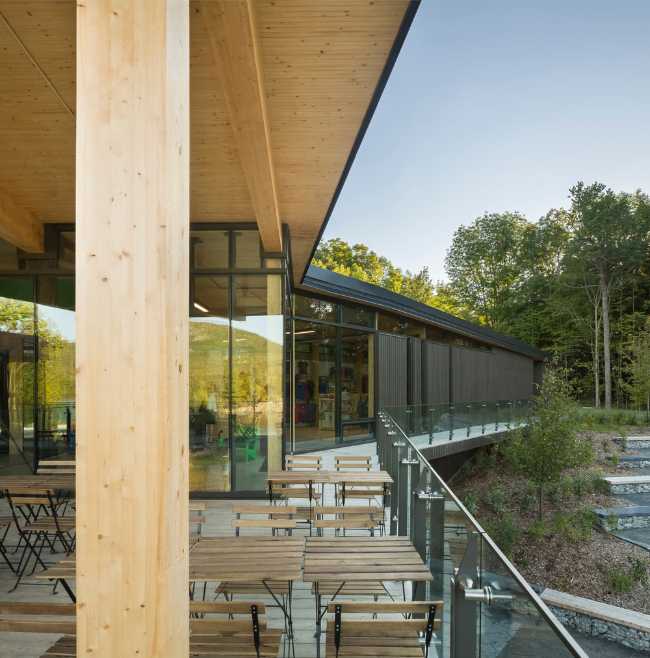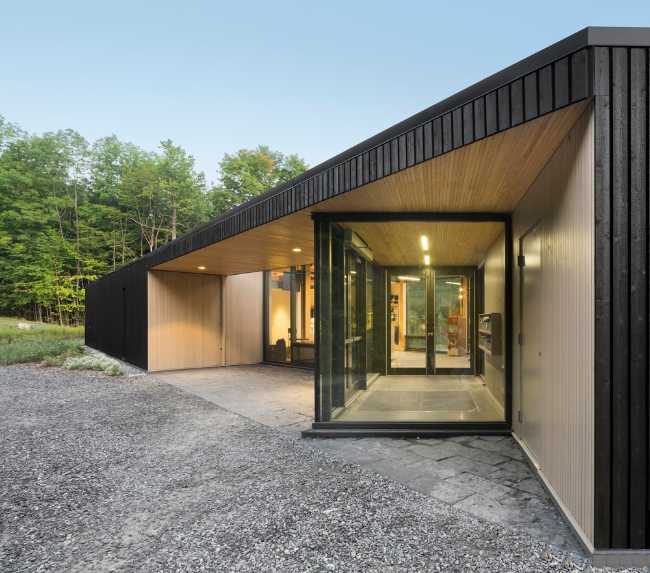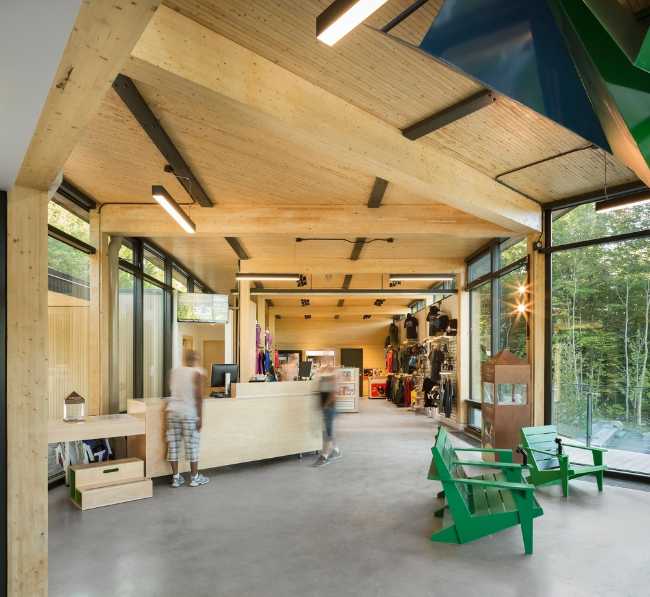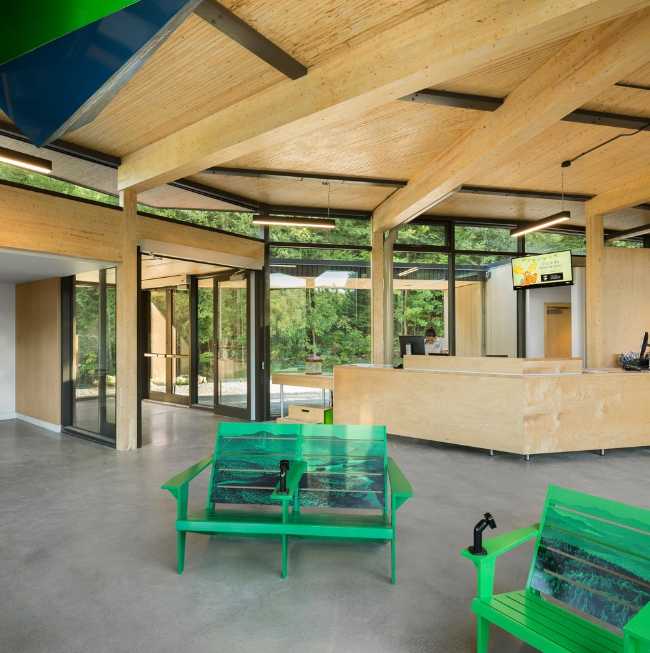A work between nature, form, and light
Among the most fascinating contemporary architectural projects in Quebec, the Centre de Services Le Bonnallie stands out for its deep connection with the surrounding landscape. Designed by Anne Carrier Architecture, this building redefines the dialogue between opacity and transparency, interior and exterior, following the topography in such a harmonious way that it seems carved directly into the earth. The volume rests along a wooded slope, embracing the view of Lake Stukely, with a structure that gently rises like a wave, echoing the natural curves of the terrain. The alternation of warm materials and natural colors gives identity to the space, tracing clear yet fluid boundaries between its functions. This project reflects an architectural vision where form and place are inseparably linked.

